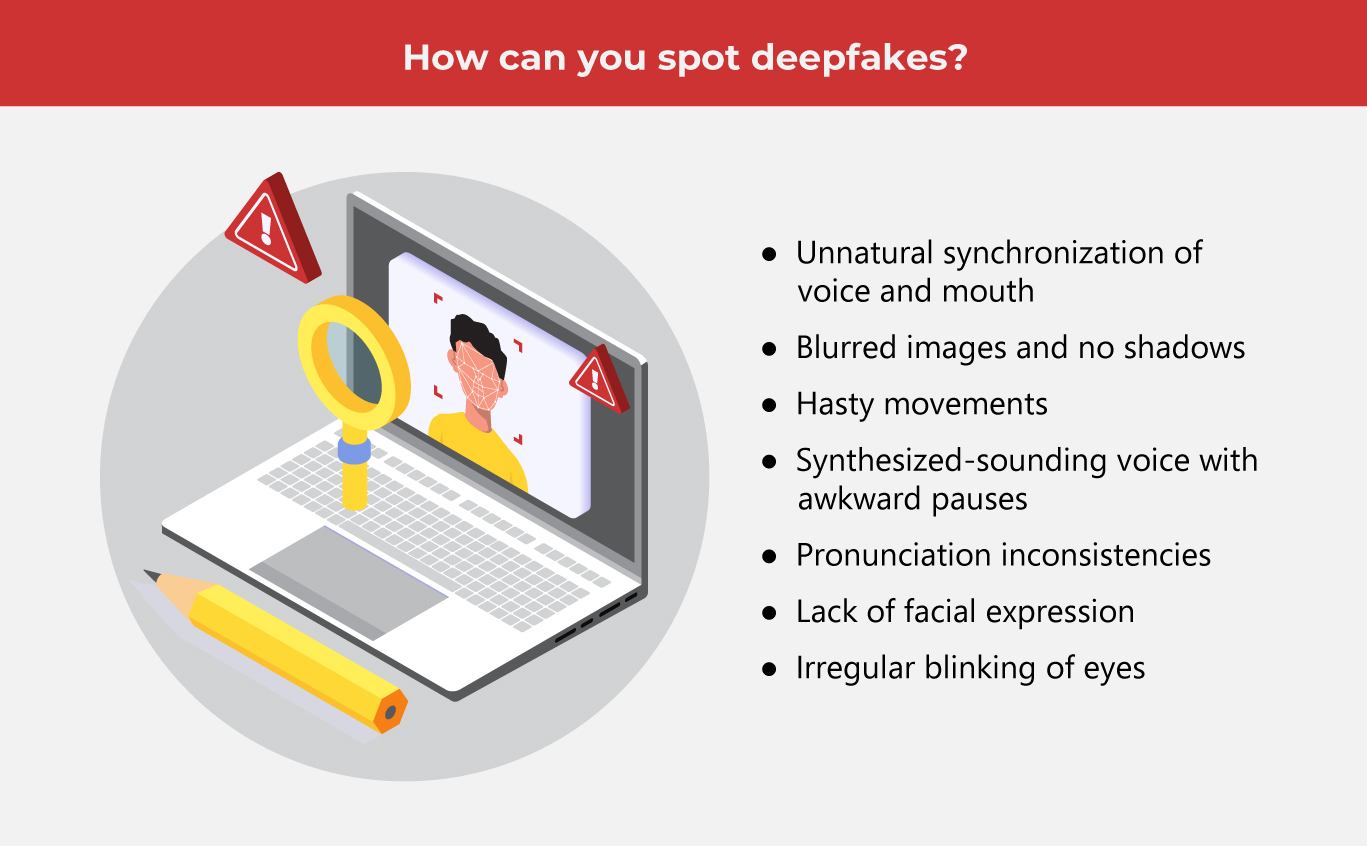How to Protect Yourself from Deepfakes

Hollywood has been using Deepfake AI to make their actors look older and younger, depending on what their roles call for. But today’s deepfakes are used, not artistically, but in malicious ways that enable sophisticated and tailored manipulation. Compounding this problem is AI’s rapid advancement and diverse global privacy laws, making it challenging to prevent the spread of harmful deepfakes.
The World Economic Forum considers disinformation one of the top global risks of 2024. An effective tool for this threat is deepfakes, which Crime Science has identified as one of the most concerning applications of artificial intelligence (AI).
Simply put, deepfakes are fabricated content, such as images, videos, and sound files, generated through AI. The word is a combination of two terms: “fake” or inauthentic and “deep learning,” a kind of machine learning that trains artificial neural networks to identify data patterns and make decisions on their own. Deep learning is often used for image recognition and speech processing, among other things.
Deepfake creators typically alter authentic data to produce content so persuasive that it’s difficult to differentiate from its genuine counterpart. One way to do this is by substituting someone’s appearance and voice in a legitimate image with another person's. This strategy can create counterfeit content that looks and sounds genuine, showing individuals acting or talking in ways they never actually did. Moreover, deepfakes can be brand-new identities that are entirely fictional.
The malicious side of deepfakes
Technology is fast evolving, making our lives more connected and convenient. However, this also means more sophisticated deepfake applications. One doesn’t need to shell out substantially for deepfake tools, which are also highly accessible. Their affordability, widespread availability, and scalability make them challenging to control and prevent.
Here are some ways deepfakes are used in different types of malicious attacks:
Cybercriminals can impersonate a victim by mimicking their voice and appearance. They can do this to access accounts or trick others into revealing private information. Deepfakes can also create fake profiles on social media, which can be used to manipulate people and result in their financial loss. Phishing can also employ deepfakes in emails, messages, and phone calls, deceiving individuals into giving sensitive data.
-
Reputation damage
Voice recordings and videos using deepfake technology can defame individuals by showing them in compromising situations or making them appear to say or do inappropriate things. This can damage their credibility, leading to social, professional, and even political repercussions.
-
Evading biometric authentication
Some accounts have added biometric authentication, such as facial recognition, to prevent unauthorized access. But deepfake images can be realistic, enabling them to match biometric data used by the app’s security systems. Deepfake algorithms can also copy speech patterns and vocal qualities that produce false yet convincing audio recordings, letting them bypass voice-based authentication systems.
-
Disinformation and fake news
Fabricated content can spread false information and manipulate public opinion. Fake speeches, phone calls, and videos can be used for smear campaigns, influencing elections and fueling global conflict. Deepfakes can also divide society by promoting harmful stereotypes, ideologies, and conspiracy theories. Regarding legalities, deepfakes can forge evidence, bringing about false allegations.
How to protect yourself from malicious attacks
The EU has proposed the AI Act, the first exhaustive AI law in the world. This seeks to regulate AI to foster its advancement and utilization. Meanwhile, the US presented its Executive Order on AI to manage AI risks to Americans and protect their civil rights. Still, more governments and multi-sectoral stakeholders need to work together to craft solutions to the global issues concerning deepfakes. Meanwhile, here are ways to protect yourself from the dangers of this technology.
-
Maintain a zero-trust mindset.
Online safety requires great care and suspicion. Instead of trust as your default setting, it pays to be skeptical initially. If the offer sounds too good to be true or the content is emotionally triggering, step back before clicking or responding.
A zero-trust mindset becomes imperative as we spend more time online and with metaverse blurring the lines between reality and the virtual world. Technology isn’t enough to fight deepfakes; public education and policy must address these dangers.
-
Always verify information and sources.
With social engineering and phishing on the rise, be vigilant against unexpected messages and unlikely requests. Always verify the email, chat, phone call or text via another platform before responding.
If it’s correspondence from a company, study the URL link before clicking. Open a new window and search for the company’s official website to compare it with your received URL. Also, do this with a supposed business call; don’t just take the caller’s word that they’re legit. Search for the official business number and call it to verify.
This is also applicable when reading information. Before accepting or sharing it, ensure that it isn’t fabricated so you won’t be an agent of fake news.
-
Be informed.
Keep abreast of upgrades in deepfake tech and scammers’ new methods so you won’t fall for them. Spread the word among your friends and family, even your children. Children should know about cyber criminals, tactics, and malicious content early on. Meanwhile, media education programs should emphasize critical thinking and provide tools to verify information. Media literacy can safeguard communities against AI-driven disinformation.
-
Protect yourself.
There are security tools and services that alert you if your data is featured on the web and identify impersonators on social media. Still, vigilance is your most effective weapon. Remember that all your posts contain personal information about you, so try to limit what you publicize. Avoid giving your contact details, whereabouts, and other data scammers can use against you.
-
Devise an action plan.
If you can’t avoid a deepfake attack, how would you react? As early as now, think about how you can prevent further damage. Immediately report the scam to the proper authorities or the platform where it took place.
The bottom line is to arm yourself with knowledge about deepfakes and share it with others. Before responding, clicking, or taking action, take a moment to think about the content’s source and don’t hesitate to authenticate. In today’s world, we should rethink our inclination to trust by adopting a more cautious approach.
As one of the Top 20 EMS companies in the world, IMI has over 40 years of experience in providing electronics manufacturing and technology solutions.
We are ready to support your business on a global scale.
Our proven technical expertise, worldwide reach, and vast experience in high-growth and emerging markets make us the ideal global manufacturing solutions partner.
Let's work together to build our future today.
Other Blog





